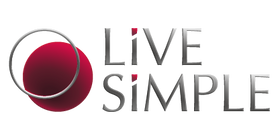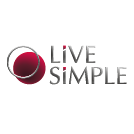Château d'Yquem
Château d'Yquem is a Premier Cru Supérieur wine from the Sauternes, Gironde region in the southern part of the Bordeaux vineyards known as Graves. In the Bordeaux Wine Official Classification of 1855, Château d'Yquem was the only Sauternes given this rating. Yquem's success stems largely from the site's susceptibility to attack by "noble rot".
Wines from Château d'Yquem are characterised by their complexity, concentration and sweetness, which is balanced by relatively high acidity. With proper care, a bottle will keep for a century or more, and the fruity overtones will gradually fade and integrate with more complex secondary and tertiary flavours.
Since 1959 (though not every year), Château d'Yquem has also produced a dry white wine called Ygrec (Fr: the letter "Y"), made from an equal blend of Sémillon and Sauvignon Blanc.
Since 1968 the château was run by Comte Alexandre de Lur-Saluces, a minority (7%) owner. The Comte inherited a typical annual production of 66,000 bottles a year. After the 1973 oil crisis, demand fell and prices plummeted. The price of a bottle of d'Yquem dropped to 35 francs; prices began to rise only in the 1980s.
Under the Comte's leadership, "tractors replaced horses, collapsing cellars were renovated, and unused acreage was planted", with production in good years reaching 100,000 bottles and sales about $10 million.
Following a bitter family feud and the decision of Eugene de Lur-Saluces (Alexandre's other brother) to sell part of his 47% share of the business, on 28 November 1996, the French luxury goods giant LVMH Moët Hennessy – Louis Vuitton bought 55% of Château d'Yquem from the family of the Comte Alexandre de Lur-Saluces for about $100 million. The Comte, after first challenging the sale in court for over two years, was kept as the manager of the estate.
On 17 May 2004, the Comte retired and was replaced by the current managing director of Château Cheval Blanc, Pierre Lurton. The Comte had been known for being particularly dedicated towards maintaining quality, going so far as to reject an entire batch of the wine if he did not like the results of a randomised testing.
In 2006, a 135-year vertical (containing every vintage from 1860 to 2003) was sold by The Antique Wine Company in London for $1.5 million, one of the highest prices ever paid for a single lot of wine. Also that year, Dior and Château d'Yquem together created a skin care product made from the sap of the Yquem vines.
In July 2011, an 1811 bottle of Château d'Yquem sold for £75,000 ($117,000) at The Ritz Hotel, London to a private collector, Christian Vannequé, to become the most expensive bottle of white wine ever sold.
The vineyard has 126 hectares (310 acres) in the Sauternes appellation, though only 100 hectares (250 acres) are in production at any time. Each year, vines from two to three hectares are grubbed up and left fallow for a year. Since grapes from newly planted vines are not worthy of the chateau name for five to seven years, about 20 hectares are held in reserve each year. The vines consist of 80% Sémillon and 20% Sauvignon Blanc, though the latter's vigour implies the proportions are more nearly equal in the final wine.
Harvesting is carefully timed, and on average six tries through the vineyard are undertaken each year to ensure that only the botrytized grapes are selected. The yield averages nine hectolitres per hectare (2.5 acres), compared to the usual twelve to twenty hectolitres per hectare in Sauternes. The grapes are pressed three times and transferred to oak barrels for maturation over a period of about three years.
On average, 65,000 bottles are produced each year. In a poor vintage, the entire crop is deemed unworthy of bearing the Château's name and sold anonymously; this happened nine times in the 20th century: 1910, 1915, 1930, 1951, 1952, 1964, 1972, 1974, and 1992 and in the 21st century one time: 2012.

